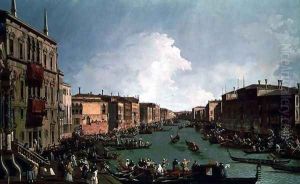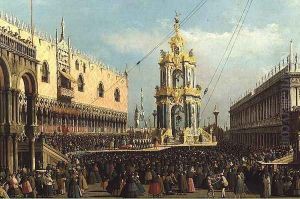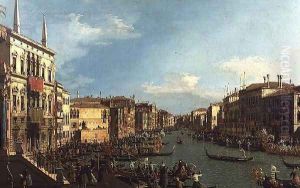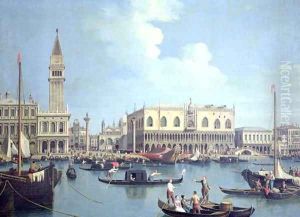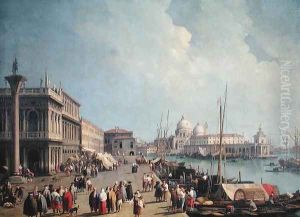Studio of Canaletto, Antonio Paintings
Antonio Canal, better known as Canaletto, was an Italian painter of the Venetian school known for his grandiose urban landscapes of Venice. He was born on October 18, 1697, in Venice, Italy, into a family of theater scene painters. His father, Bernardo Canal, was a notable theatrical scene painter, which had an early influence on Canaletto's artistic development.
Canaletto initially began working in his father's studio, but he quickly developed a style of his own. He is particularly famous for his precisely detailed, large-scale views of Venice and its canals, which capture the city's architecture and the bustling life of its inhabitants and visitors. These paintings, known as vedute, were highly sought after by wealthy patrons, including foreign collectors and tourists, particularly the English who were undertaking the Grand Tour of Europe. His work was a precursor to the veduta genre that became popular in 18th-century Venice.
In the 1730s, Canaletto visited Rome, where he was influenced by the work of Giovanni Paolo Panini, another vedute painter. After his return to Venice, he continued to produce vedute, but his style became more rigorous in perspective and more severe in composition, possibly under the influence of the architect Andrea Palladio. Canaletto's paintings from this period reflect a greater emphasis on architectural accuracy and a more formal approach to composition.
Canaletto's international fame led to a stay in England between 1746 and 1756, where he painted numerous works depicting the River Thames and the London skyline. The English period of his career was initially successful, but as his stay prolonged, his popularity began to wane, and he eventually returned to Venice.
Towards the end of his life, Canaletto's work was overshadowed by the rising trend of Romanticism, and his precise style was criticized for lacking emotion and vitality. However, his reputation was revived in the 20th century as art historians began to appreciate the documentary value and technical skill of his paintings. Canaletto's works are now held in high esteem and can be found in major museums around the world.
Canaletto remained active until his death in Venice on April 19, 1768. His legacy includes not only his own vast oeuvre but also the influence he had on other vedute painters, such as his nephew Bernardo Bellotto, who was also known as 'Canaletto' in some of the cities where he worked. Canaletto's precise and evocative views of Venice continue to define the city for modern audiences and contribute to the historical image of 18th-century Venice.
